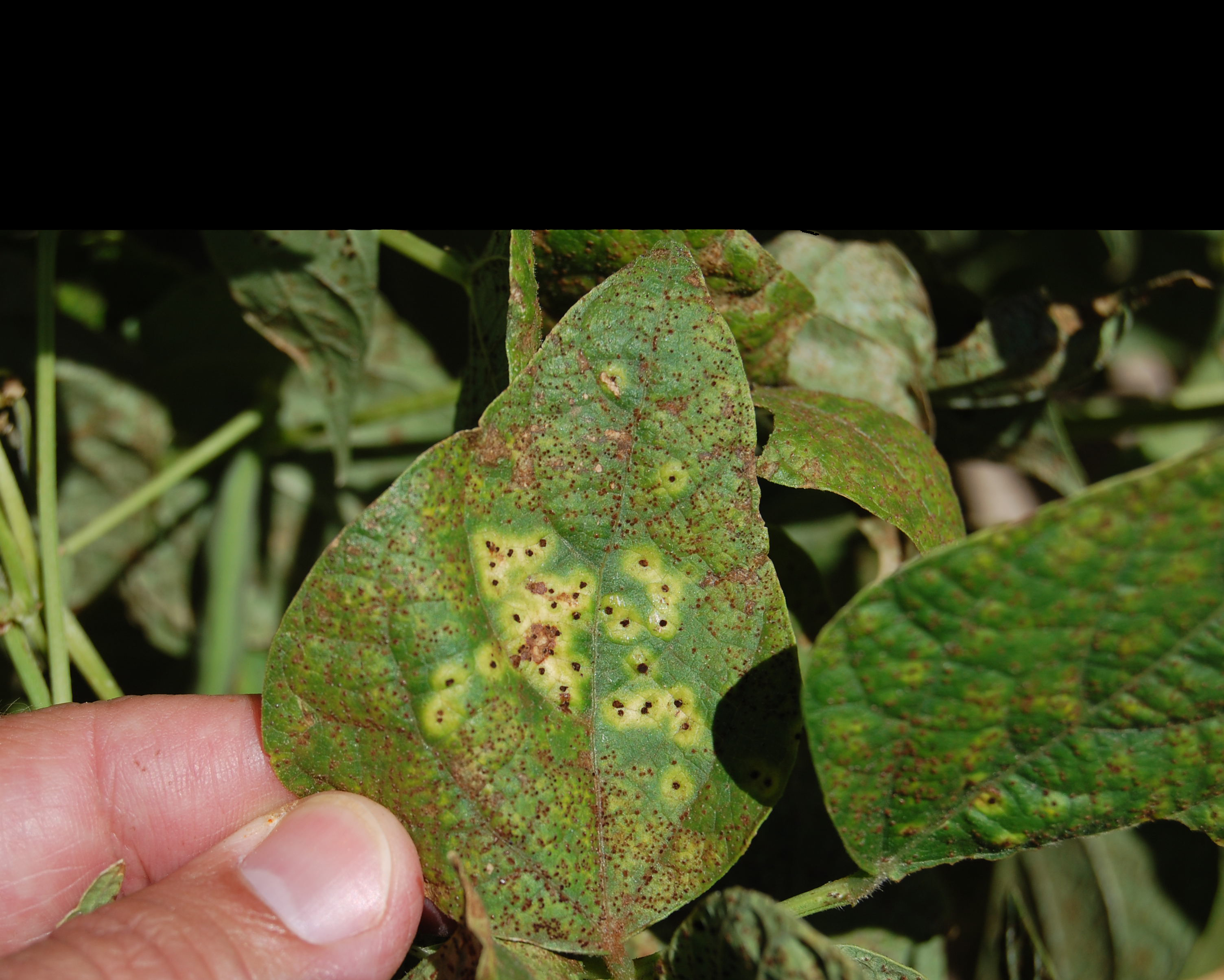By Robert Harveson, Extension Plant Pathologist
Pathogen
Rhizoctonia solani Kuhn. Teleomorph: Thanatephorus cucumeris (A. B. Frank) Donk. Fungal structures: hyphae, sclerotia, sterigmata, basidiospores. The pathogen exists primarily as sterile mycelium that is colorless when young and becomes tan to light brown with age. Hyphae typically branch at right angles, are constricted at their base, and contain a septation near the base. The perfect, basidial stage is less common, forming blackish, barrel-shaped spores on a thin layer of mycelium at or near the soil level under conditions of high humidity.
Disease Symptoms
Rhizoctonia solani can cause seedling death, root and stem rot, stem cankers, and pod rot. Initial symptoms appear on stems or roots as linear or circular reddish, sunken lesions with a brown to reddish-brown border. The cankers enlarge with age encircling stems, and retard normal plant growth. Distribution of infected plants often occurs in clusters within field. Severely infected plants may die with permanent wilting of foliage. Mixed infections with other pathogens such as Pythium and Fusarium are common later in the season. Pods may also develop lesions and rot if in contact with moist soil.
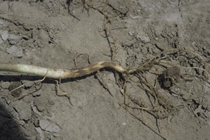
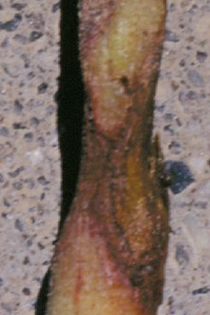
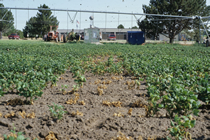
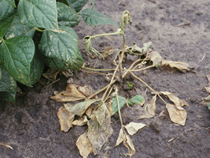
Favorable Environmental Conditions
The pathogen survives in infected plant residue and continuous cropping with susceptible crops such as beans, sugar beets, or potatoes can increase pathogen population levels in soils. Irrigation water and soil movement spreads propagules of Rhizoctonia, and moderate to high soil moisture and low soil temperatures favors seedling disease. Damage is primarily limited to seedlings, but older plants can be affected if stressed by extremes in temperature generated by warm soil and cold irrigation water.
Management
Genetic Resistance
Few tolerant cultivars are available adapted for this region.
Cultural Practices
Rotation with non-host crops will reduce soil population levels. Deeply incorporating old crop residue early enough to promote decomposition prior to planting will also reduce sources of inoculum. Lastly, planting at seed spacings of 1-1.5 inches in soils that have warmed above 60° F with enough moisture to allow rapid germination and emergence will also help to avoid problems due to the pathogen.
Chemical/Biological Control
Fungicide seed treatments can help protect young seedlings early.
